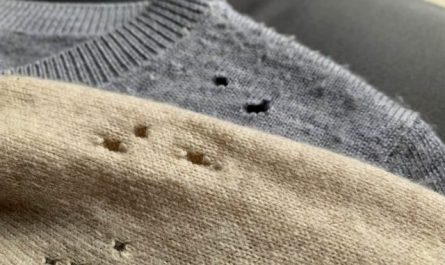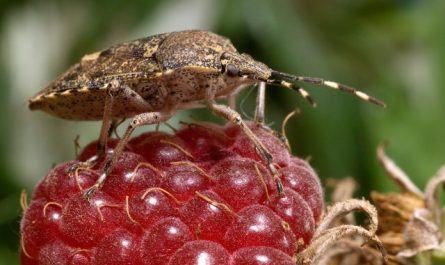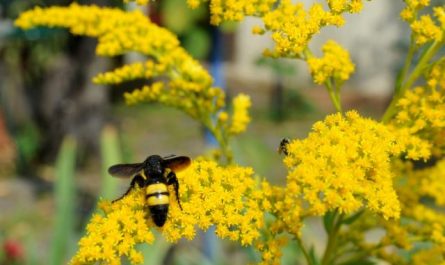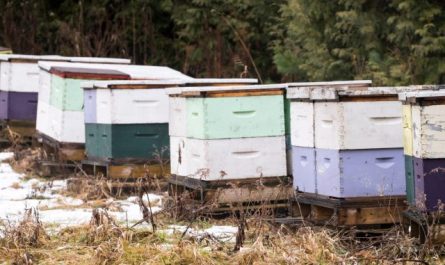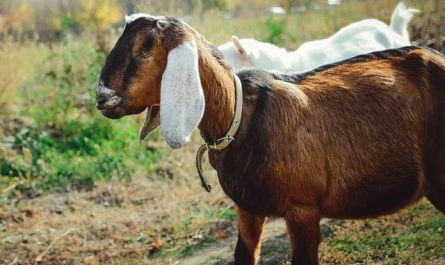When getting an aquarium, many of us find it difficult to decide which fish should live in it. Admiring pictures from the Internet, looking at the windows of pet stores and offers on the market, you want to buy everything. However, “everything” is the wrong choice, since each type of aquarium fish has its own needs. They determine their compatibility, as well as health and life expectancy. Therefore, if you are setting up an aquarium for the first time, it is better not to get “complicated” fish in it – too sensitive to acidity, hardness and temperature of the water. You need to buy the most unpretentious ones, which also easily get along with others. Which ones – I will tell you in my article.

1. Guppy
Guppy is a classic choice for a beginner aquarist. The fish is peaceful, active, omnivorous, unpretentious, and relatively inexpensive. In a 30-liter aquarium, which is usually where many start, you can settle a whole school – from 8 to 12 pieces. If there are individuals of both sexes in the school, there should be 2-3 times more females than males, you can get offspring. Moreover, if you are persistent and attentive, you can even see how guppies give birth to fry (this is a viviparous fish), which is very interesting.
In addition, guppies easily tolerate turning off the compressor and filter at night. They withstand a temperature range from +20 to +26 °C, pH 6,5–8,5. They are not demanding of lighting. They do not show aggression either to each other or to neighbors. They are active during the daytime, which makes the aquarium especially attractive. And they have a fairly wide choice of colors. Female guppies grow up to 6 cm, males up to 3 cm.
However, this fish also has its downsides. Guppies do not live long, about 1,5 years. And only under optimal conditions – up to 3 years. They like to have plants in the aquarium. If you do not remove the mother from the aquarium with the babies in time, she will eat her offspring (not to mention other members of the flock).
Guppies are compatible with any fish with a peaceful nature: swordtails, danios, mollies, neons, corydoras, tetras. It is not advisable to keep them with barbs and gouramis, as they will chase the guppies and pluck their tails.

2. Swordtails
Swordtails are another option for a trouble-free fish, which also easily gets along with guppies. Swordtails are peaceful, omnivorous (however, it is better to alternate dry food with live food), grow up to 10 cm, live up to 5 years. They feel good if there are algae in the aquarium and, at the same time, open space for swimming. The temperature range does not go beyond +15 … +25 ° C, they prefer water pH in the region of 7,0 – 7,5.
Like guppies, swordtails are viviparous and can reproduce under suitable conditions. However, their aquarium should be covered with a lid, as the fish sometimes jump out of it.
Among the disadvantages, it is worth highlighting the aggressiveness within the school – swordtails can fight for females and territory. Therefore, it would be good to have 2-3 females per male. But in this case, a 30-liter aquarium will be too small for them (it is recommended to take only 3 swordtails for this volume). For a school of 5 individuals, 50 or even 100 liters is optimal. In addition, swordtails are partial to veil-tailed fish, whose tails they often pinch off.
In general, they can be combined with almost any small fish of a peaceful nature – tetras, danios, minnows, guppies, acanthophthalmus, corydoras, ancistrus. If you settle swordtails with large fish, such as astronotus or acaras, the latter will hunt them.

3. Mollies
Mollies are peaceful, omnivorous, and reproduce easily (under favorable conditions, they produce offspring every month). They have many color morphs. They are active. They like to live in a school (there should be more females in a school than males). They feel good in the temperature range of +25…+27 °C, with a water pH of 7,0–8,0. With good maintenance, they live about 4 years. They have several colors. You can have 30-2 specimens in a 4-liter aquarium. But the larger the volume of water, the more comfortable they are. Ideally, there should be at least 10 liters of water per fish.
The main disadvantage is the reaction to errors in care (sharp changes in aquarium water parameters, temperature changes). This leads to a reduction in lifespan (up to 1 year), although in stable comfortable conditions mollies can live up to 6 years. They like to have plants in the aquarium. They do not reproduce in a regular aquarium.
Who do mollies get along with? Swordtails, guppies, platies, gouramis, angelfish.

4. Platies
Platies, like guppies, swordtails and mollies, are almost ideal for a beginner. They are completely unpretentious and peaceful. They have over 130 varieties. They reproduce easily (viviparous), a female can give birth to 20 to 40 fry every 28 days. They can only eat dry food.
They feel good in the temperature range from +24 to +27 °C, pH 7,5–8. They live a long time – up to 4–5 years. They reach 4–5 cm in length. They do not dig up or shake algae. They have a choice of colors. In short, they are an excellent option for those who want to have an aquarium, but do not have extra time for special care of it.
You can have a pair in 30 liters, but a school of 4-5 pieces will be more comfortable in 50 liters, 7 pieces can be settled in a 70-liter aquarium, since pecilia are very nimble and love to swim.
But these fish also have several disadvantages. First, they are viviparous, so if you do not separate them in time, they can eat their offspring. Second, they do not have a very strong immune system. They like an alkaline environment, so it is better not to put snags in the aquarium (they acidify the water), but algae are a must, since these fish also need plant food.
Who are platies compatible with? There is a very wide choice – with all live-bearing fish (guppies, swordtails, mollies, etc.), danios, tetras, angelfish, various catfish…

5. Danio
Danio is another amazing fish, suitable for the first aquarium. Omnivorous, unpretentious, has many species and morphs, one of which is fluorescent. Feels good in the water temperature range from +20 to +25 °C, at a pH of 6,5–7,5. Easily gets along with non-aggressive fish of its size. Keeps in a school. Therefore, for a 30-liter aquarium, you need to buy 5–6 pieces. Active, likes to swim quickly, stays near the surface of the aquarium.
The disadvantages of danios are their timidity, which can cause the fish to jump out of the water. Therefore, when keeping them, the aquarium should be covered with a lid. In addition, the water temperature should not be allowed to rise above +25 °C, since such conditions reduce immunity and shorten the lifespan of danios.
Who can danios be combined with? With guppies, swordtails, tetras, mollies, platies, tetras, gouramis, catfish.

6. Corridor
Corydoras are catfish. What kind of aquarium would it be without catfish? They are peaceful, unpretentious in food – they eat everything that falls to the bottom of the aquarium, they like to live in a school. They have a strong immune system and a long lifespan – up to 8-10 years. They prefer a temperature of +20 … +25 ° C, pH from 6,0 to 7,4. Since they lead a bottom lifestyle, they like the soil to be fine and soft, sand is better.
The only drawback worth highlighting is the need to create many shelters for these cute fish in the form of snags, artificial grottoes, pipes or stones so that they can hide in them.
For 30 liters, in combination with other fish, you can take 2 pieces of any type of Corydoras, and Corydoras has quite a few of them. You can combine them with guppies, swordtails, danios, tetras, and other catfish – the main thing is that the fish have a peaceful nature.

7. Macrognathus
Macrognathus, or Spiny Eel, is another unpretentious catfish. It gets along with all peaceful fish. It leads a nocturnal lifestyle. During the day, it hides in algae, under snags, burrows into the sand, leaving only the tail and head outside, which looks scary if you are not used to it. It seems that someone ate it and that’s all that’s left! In nature, it can reach 40 cm, in an aquarium it grows several times smaller – no more than 20-25 cm. It lives from 8 to 18 years.
Quite timid, likes to have other bottom fish nearby. Feels comfortable at a temperature of +22…+26 °C, likes the pH of the water not to go beyond 6,5–7,0.
One of the main disadvantages is the ability to get out of the aquarium, for example, along the equipment wires. Therefore, the aquarium must be closed. In nature, the spiny catfish can stay outside the reservoir for up to 1 hour, so at home its escape may not be noticed. Another disadvantage is that it likes a large volume of water (it feels comfortable with a water volume of 80 liters), but a small pair can live in a 30-liter aquarium. It leads a nocturnal lifestyle – during the day it prefers to hide from sight in algae or bury itself in the ground. It is difficult to reproduce. It digs up vegetation, which is why it floats up.
Who to combine these cute catfish with? With any fish – guppies, swordtails, rainbowfish, danios, tetras, gourami, other catfish.

8. Ternetia
Tetras are unpretentious, peaceful, and active. They like to live in a flock. They have several selective forms, the most popular of which has the sweet name “Caramel”. They reach 4-5 cm in length. They live up to 6 years.
Omnivorous, not prone to overeating. They prefer a temperature regime of +22…+26 °C, water pH – 5,7–7,0. They can live in a small volume of water, but 30 fish, no more, will still feel good in 3 liters. But a school of 7 pieces is better to settle in an aquarium of 50 liters.
The negative qualities of tetras include timidity, which can cause the fish to turn pale and hide away from sight. In a school, they periodically bite each other. They do not like small fish, but, in addition, they are not recommended for general maintenance with guppies, veiltail breeds and neons. Although it is in this combination that they are often offered for sale on the market.
Tetras can be kept together with swordtails, tetras, danios, corydoras and other small fish of a peaceful nature.

9. Neon
Neons are another popular, unpretentious fish. They live from 1,5 to 4 years, depending on the temperature of the aquarium water. They lead a schooling lifestyle. They grow up to 3-3,5 cm in length. They have several types with different colors. They like to have plants in the aquarium. They are omnivorous. They prefer the water temperature to be between +18 and +24 °C, pH 5,5-8,0. They can live even in a small volume of water. For a 30 liter aquarium, this can be a school of 12 pieces, for a 50 liter aquarium – 20 pieces.
Among the disadvantages, it is necessary to note the dependence of life expectancy on water temperature – at 18 °C, neons can live up to 4 years, at a higher temperature their metabolism increases, and they age and die quite quickly. They should be added to an aquarium with other fish last, after the population has formed and the aquarium has already stood for a long time (at least several weeks). Otherwise, neons quickly die.
These fish get along well with swordtails, tetras, pelicians, pulchers, ornatus, lanterns and shrimps. They are incompatible with aggressive and large fish: catfish, barbs, goldfish, cichlids, gourami, labeo.

10. Glass tetra
The glass tetra is a peaceful, unpretentious, schooling fish. It reaches a length of about 6 cm. It likes water temperatures within the range of +23…+27 °C. It is easily bred, but for its breeding you need to purchase a special spawning aquarium.

Tetra can be kept together with Corydoras, Microgeophagus, Apistogramma, Discus and Scalaria. But those fish that swim quickly and live in the upper layer of water are not suitable for it, since it itself likes to swim in the upper and middle layers and does not need competitors. Up to 30 such fish can be kept in 6 liters.






